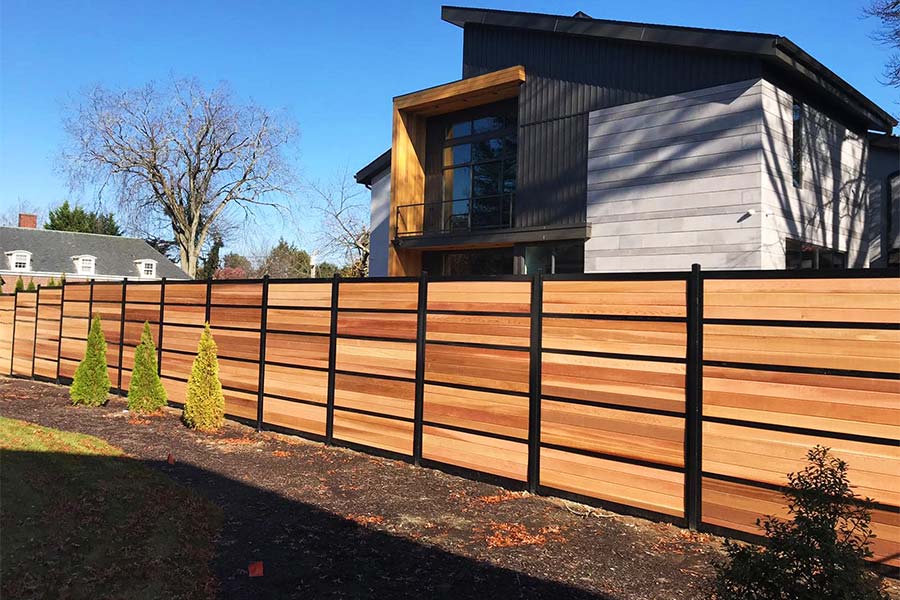All Categories
Featured

Choosing the ideal fencing product is important for accomplishing the balance of longevity, visual appeals, and functionality that fits your residential property. Timber, plastic, and light weight aluminum are preferred options, each with unique functions that satisfy certain requirements. Here's a comprehensive consider the benefits and disadvantages of these three materials.
Wood Fencing. Pros:. Classic Allure: Wood uses an all-natural, classic look that matches different architectural styles. Adjustable: It can be painted or stained in a range of design and colors. Inexpensive: Wood fencings are frequently cheaper ahead of time than vinyl or aluminum. Eco-Friendly: As a renewable energy, timber is sustainable and naturally degradable when sourced properly. Disadvantages:. Maintenance-Intensive: Requires regular staining, paint, or sealing to shield against weather and bugs. Shorter Life Expectancy: Depending upon the kind of wood and environment, it typically lasts 10-15 years. Susceptability to Damage: Prone to rotting, warping, and termite damage without appropriate care. Timber is optimal for homeowners who value aesthetic appeals and are ready to invest time and initiative in maintenance to extend its life.
Plastic Fence. Pros:. Sturdy: Immune to parasites, rot, and weather condition, plastic maintains its structure in severe problems. Low Upkeep: Calls for little maintenance beyond occasional cleansing. Lengthy Life-span: Vinyl can last 20-30 years without significant wear or damage. Flexible Layouts: Readily available in numerous shades, textures, and styles, consisting of choices that simulate wood. Cons:. Costly Installation: Plastic fencings are extra costly to mount compared to timber. Fragile in Cold Weather condition: Vinyl can crack in extreme cold climates. Hard to Repair work: If damaged, entire sections might require substitute, which can be challenging to match. Plastic fencing is a great selection for those prioritizing long life and marginal upkeep, even if it features a higher ahead of time expense.

Aluminum Fence. Pros:. Rust-Resistant: Light weight aluminum does not rust, making it ideal for moist or wet locations. Strong however light-weight: Offers toughness without being excessively heavy, which simplifies setup. Low Upkeep: Requires bit greater than cleaning and periodic repainting. Longevity: Aluminum fences can last for decades without considerable damage. Sophisticated Styles: Typically utilized for decorative objectives, aluminum includes elegance to any kind of building. Cons:. High First Expense: Aluminum fencings are among the extra costly alternatives. Minimal Privacy: Frequently made with open rooms, they don't block sights or sound. Susceptible to Dents: While strong, light weight aluminum can be nicked or bent with hefty impact. Aluminum is ideal fit for those who want a durable, stylish fencing and don't require total personal privacy.
Making the Right Selection. Each material has its weaknesses and staminas:

Wood is excellent for eco-conscious customers and standard visual appeals who do not mind maintenance. Plastic benefits homeowners looking for a weather-resistant, low-maintenance remedy. Light weight aluminum is a durable, decorative option for those who desire beauty and long life. Consider your priorities-- whether it's expense, personal privacy, upkeep, or appearance-- and speak with a fencing specialist to select the product that ideal fulfills your demands. A well-selected fence will improve your building for several years to come.
Latest Posts
Laminate Floor Covering: Design Meets Sturdiness at Carpet Interiors Floor & Home
Published Apr 22, 25
2 min read
Sophisticated, Sturdy Floor Tile Floor Covering for each Space
Published Apr 22, 25
1 min read
Smooth Flooring Installation-- The Carpet Interiors Floor & Home Way
Published Apr 22, 25
2 min read
More
Latest Posts
Laminate Floor Covering: Design Meets Sturdiness at Carpet Interiors Floor & Home
Published Apr 22, 25
2 min read
Sophisticated, Sturdy Floor Tile Floor Covering for each Space
Published Apr 22, 25
1 min read
Smooth Flooring Installation-- The Carpet Interiors Floor & Home Way
Published Apr 22, 25
2 min read